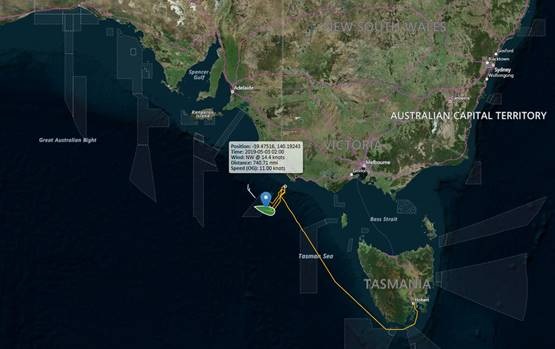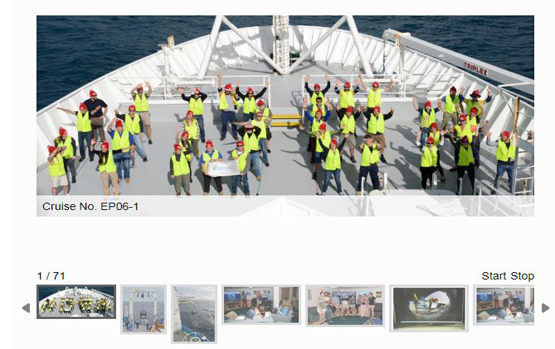The RV Investigator is currently undertaking oceanographic research along the 110°E meridian off Western Australia as part of the second International Indian Ocean Expedition. The voyage is led by Professor Lynnath Beckley of Murdoch University and the research is supported by a grant of sea time on RV Investigator from the CSIRO Marine National Facility..
|
Date: June 11, 2019 |
Time: 1200 AWST |
|
Latitude: 23°S |
Longitude: 112°E |
|
Wind direction: SSW |
Wind speed:19 knots |
|
Swell direction: SW 3.5 m |
Depth: 1071 m |
|
Air temperature: 20°C |
Sea temperature: 24°C |
|
Notes: The third Triaxus section has been completed. RV Investigator is bolting for the barn! |
|
Waves breaking on the beach are a familiar sight to many people. Ocean swells, generated by storms out at sea, constantly move toward the coast. As the swell waves move into shallow water, they steepen and then finally break. The same thing happens below the surface of the ocean.
Waves inside the ocean are known as internal waves. Instead of existing at the boundary between air and ocean, they exist between layers of water of different density - warmer, lighter surface waters lie above colder, denser waters. Internal waves ride these density layers, and often steepen and break. Their breaking causes mixing inside the ocean, which is vital for distributing heat.
We measure ocean mixing with a Vertical Microstructure Profiler (VMP), also affectionately known as the "toilet brush". The VMP has very sensitive probes that measure the small changes in ocean temperature and velocity that are caused by breaking internal waves. The mixing rate not only tells us how fast heat moves between the surface and the deep ocean, but also how rapidly nutrients can be brought to the surface to supply vital ingredients for the plankton at the base of the marine food chain.
Be sure to follow our daily Log from One Ten East at https://iioe-2.incois.gov.in and https://wamsi.org.au






